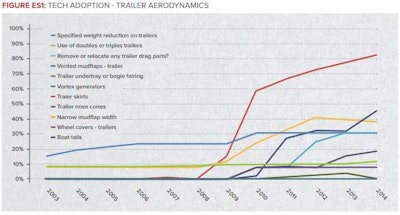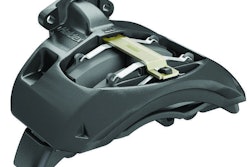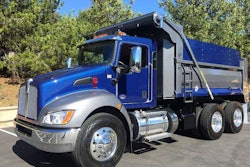The North American Council for Freight Efficiency (NACFE) and Carbon War Room have released their latest Confidence Report addressing the benefits and challenges of a variety of trailer aerodynamic devices.
The Confidence Report determined the per-vehicle fuel economy benefit of trailer aerodynamic devices can be high, ranging from 1 percent to more than 10 percent, depending on the devices chosen. And most fleets are choosing a combination of technologies to deal with reducing the aerodynamic drag in one or more key areas of the trailer: the gap, the underbody, and the rear, reports Trucking Efficiency, the joint effort between NACFE and Carbon War Room.
“Fleets have moved from asking why they need aerodynamic devices on their trailers to determining when and how they will add them,” says Mike Roeth, operation lead at Trucking Efficiency.

The study team found that trailer aerodynamic technologies and strategies are constantly and rapidly evolving. The options detailed in the report are all currently available on the market today, and most are mature with a good track record of functionality, though they may be more or less economical depending on the specifics of a fleet’s operations.
Trucking Efficiency says trailer aerodynamic devices improve fuel efficiency by reducing drag so that it takes less fuel to move down the road, especially at higher speeds. And while many aerodynamic devices for trailers have been around for years, the upcoming Phase 2 greenhouse gas emission standards will encourage trailer manufacturers and fleets to invest in the devices for their trailers.
“Every trailer will benefit from improvements in aerodynamics, but there are no one-size-fits-all solutions. This report reduces the confusion and explains the combinations that make sense for fleets,” says Rick Mihelic, program manager with NACFE.
To download a copy of the latest Confidence Report, please CLICK HERE.













